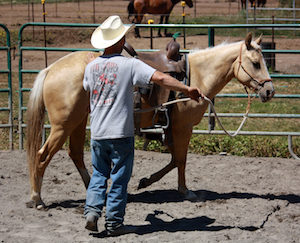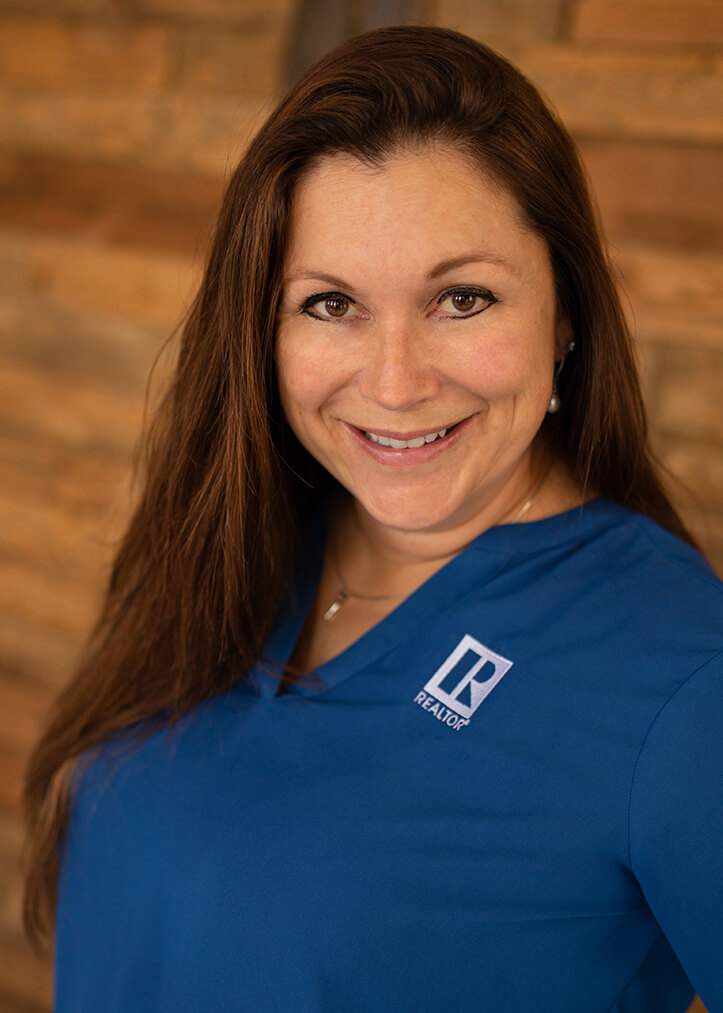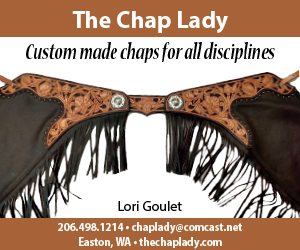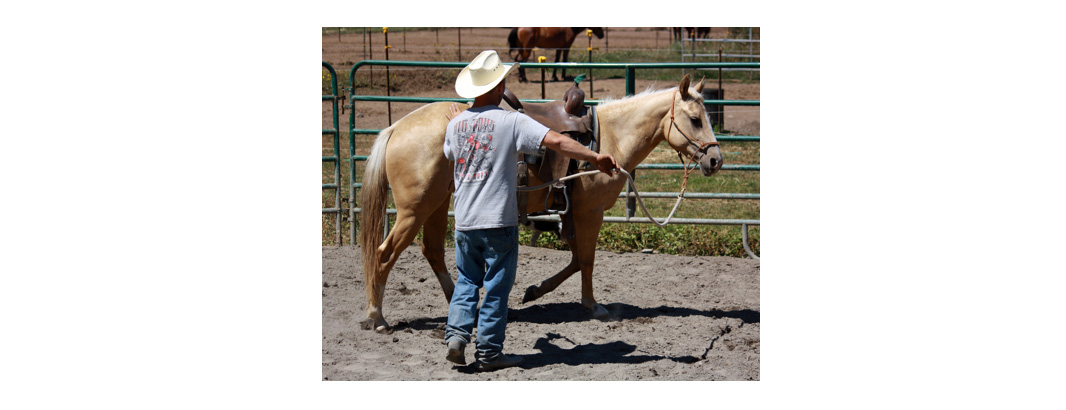Part 1: Philosophy
by Allison Trimble

I have been known to cringe at the term “ground work.” The literal meaning is not the issue, but it’s evolution over time which approaches ground work as a drill or a maneuver rather than what it is: horsemanship. Ground work is possibly the most important part of relationship with a horse because the most time is spent there. It is also the place that I see most mistakes being made. Here are things to keep in mind when considering ground work philosophy.
Mindset. I teach people to think of it less as ground work and more as handling. That helps avoid the trap of only being conscientious when actively “working” on the ground. It helps the rider be present from the moment they enter a pen to catch a horse, until the horse is returned to the pen: catching and haltering, leading, tying and saddling all fall under the concept of ground work.
Horse Behavior. We know that in the mind of a horse, pecking order is determined by which animal moves the other animal’s feet. It really is that simple. One horse applies pressure to another through biting, kicking, lunging and the other moves away. The horse that impresses the other to move is the dominant horse. In the human/horse relationship we are taking what is true about horses and using that same concept of pressure and release to train them. We use it more subtly, but the intention is the same. Remember that controlling the feet of the horse is always the goal.
Education. Establishing position as the leader in the relationship does not come without a process. Though the horse’s behavior is true, when working with them we are attempting to fine-tune a relationship that maintains leader positioning. In addition, we are building a language that allows us to direct the horse and gain trust and also make him receptive and responsive to our cues. Ground work, in its formative moments (often referred to as halter-breaking), should be taken quite seriously. This is the introduction for the horse into a long relationship with humans. Similar to children, these are the moments that shape their future. This will also be the foundation to which the handler returns when training goes off course in subsequent stages.
Body Language. The goal should always be to have the horse focused on and reading the handler. The purpose of drills and ground work handling is to create a focused horse. I often see people working hard to read the horse. While this is an important part of the process, the handler can lack the understanding that the goal is to have the horse’s eyes and ears on the human, responding to human body language. Intent should be to read the horse and then impact it in a way that results in his attention, trust and response. A focused horse is a horse that is on his way to being a good partner.
Space and Contact. There are two things a horse needs to be able to understand properly: they must give their handler space and respond to being sent away while respecting the boundaries of halter pressure. This is important in all aspects of ground work. They also must accept handling of all parts of their body. This is important for catching, haltering, brushing, blanketing, saddling and riding. I believe the combination of these two things becomes grey area for many people. Too many horses spend a large portion of time standing on top of the handler. This is created by handlers who don’t understand proper “space and contact” rules. With my horses it’s simple: I may touch and initiate contact at any time, they can never initiate it with me. This is a critical difference in mindset for the horse and an integral part of establishing and maintaining leadership.
Connection. There is no separation between the work done on the ground and saddle work. Ground handling prepares the horse for riding and can often offer a safe alternative to working on problems areas. I strongly encourage riders to think of the relationship with a horse holistically, with groundwork flowing into riding as a cohesive package called “horsemanship.”
Tune in next month for tips and ideas for working with a horse on the ground.
Originally Published September 2014 Issue

Allison Trimble is a Realtor® specializing in equestrian properties, farm and ranch properties, and residential real estate. She’s a former horse trainer, and a current owner, breeder, and non-pro competitor in cow horse and reining events. For many years, Allison wrote a monthly column for The Northwest Horse Source.
Learn more at www.allisonblakerealestate.com








